

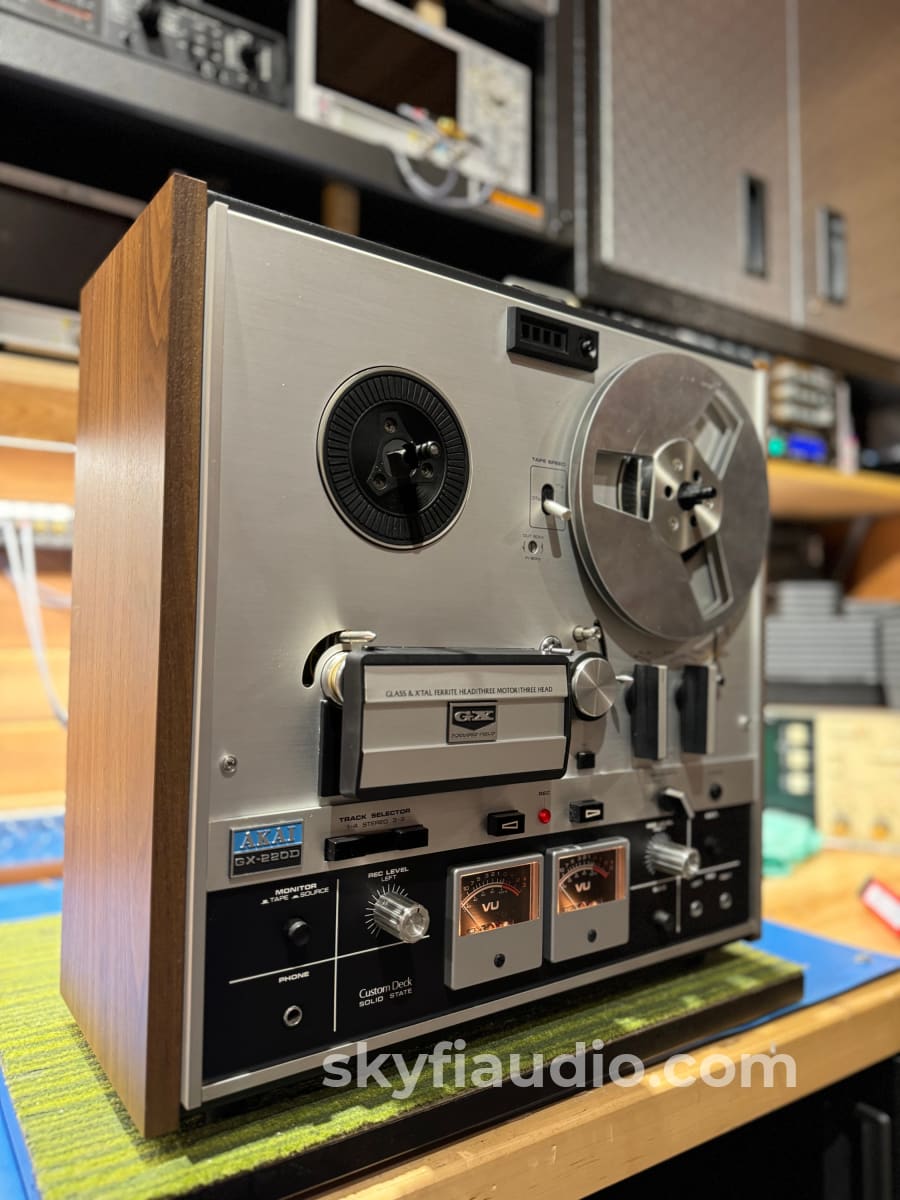
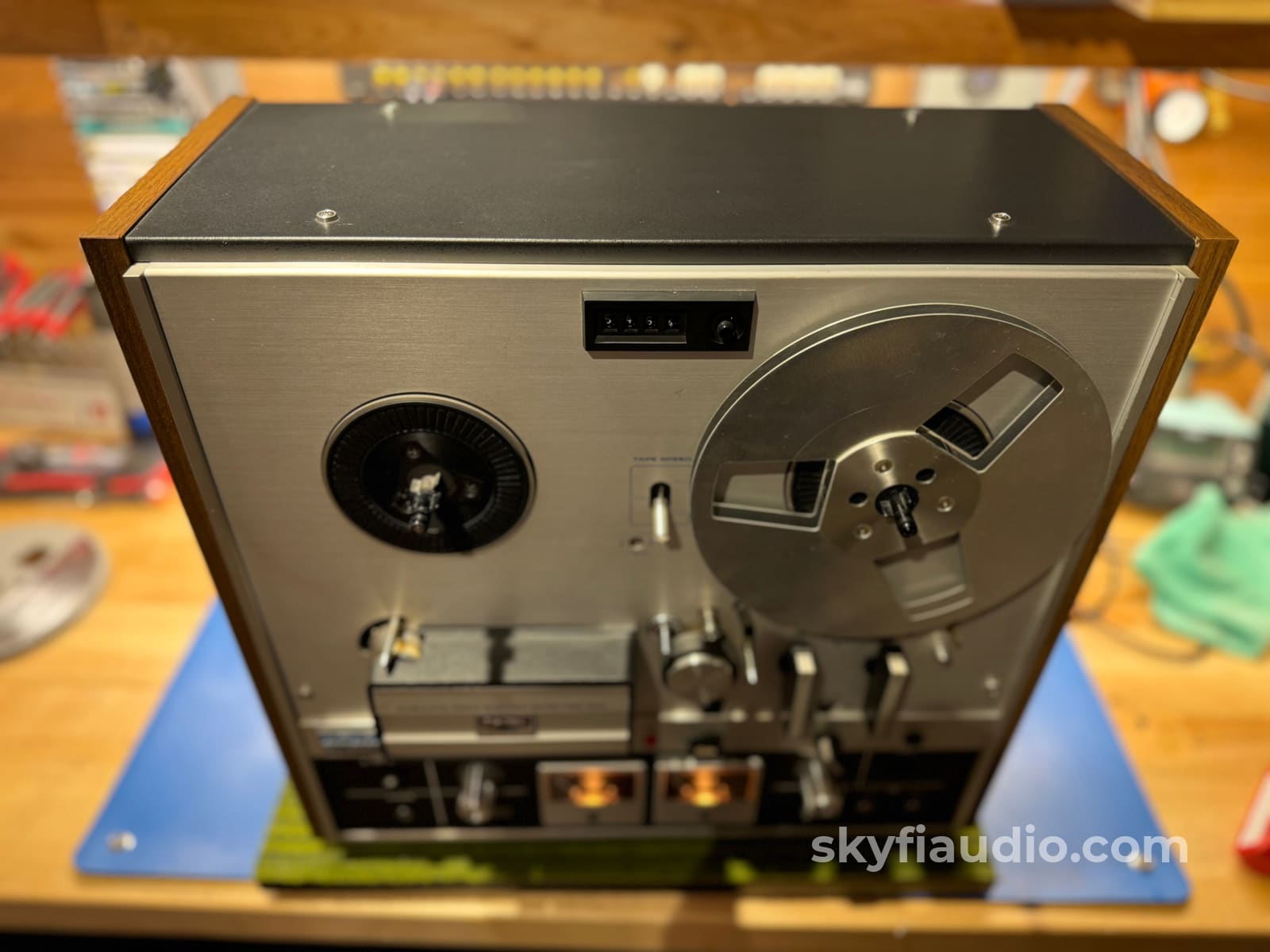
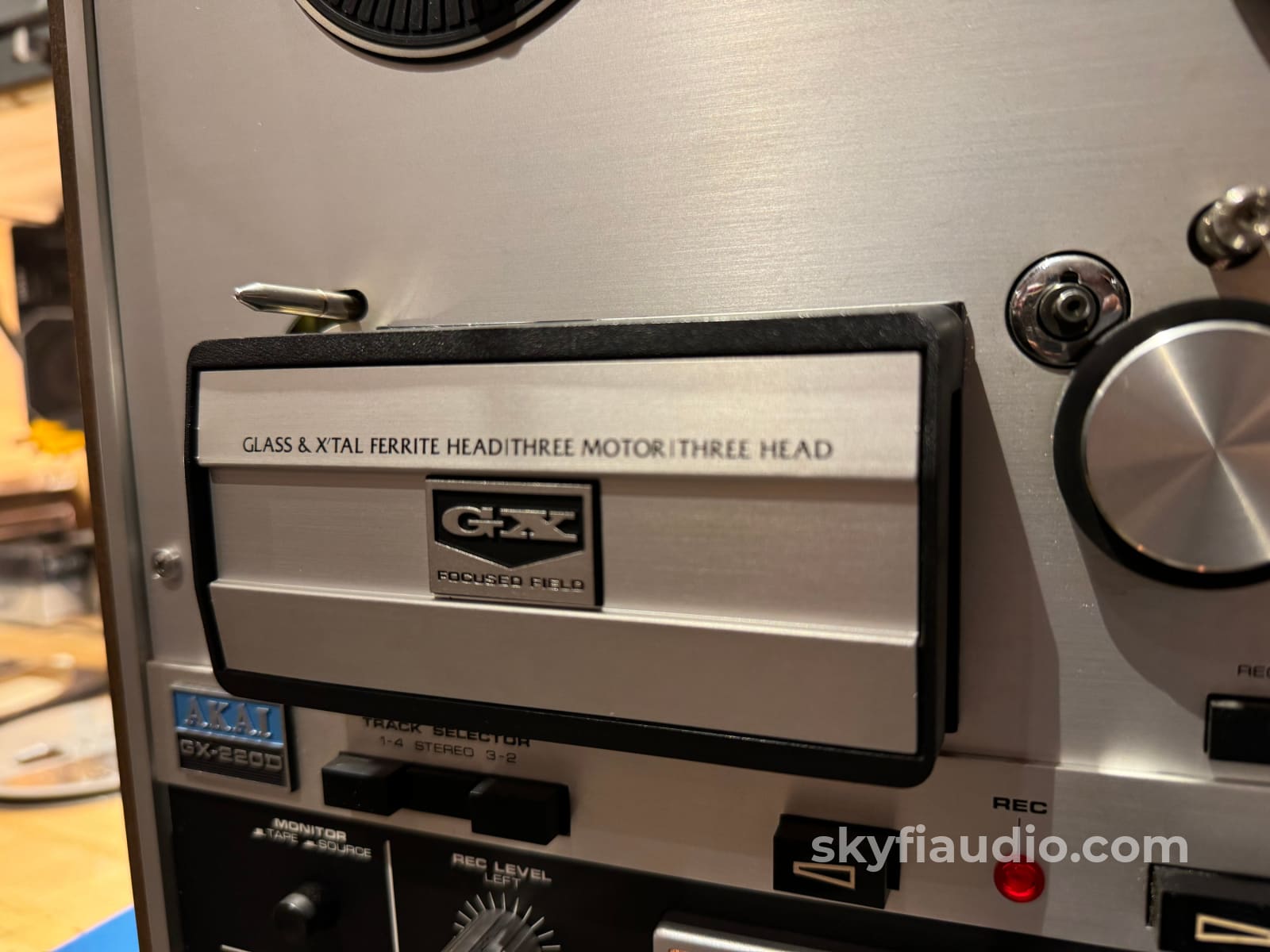
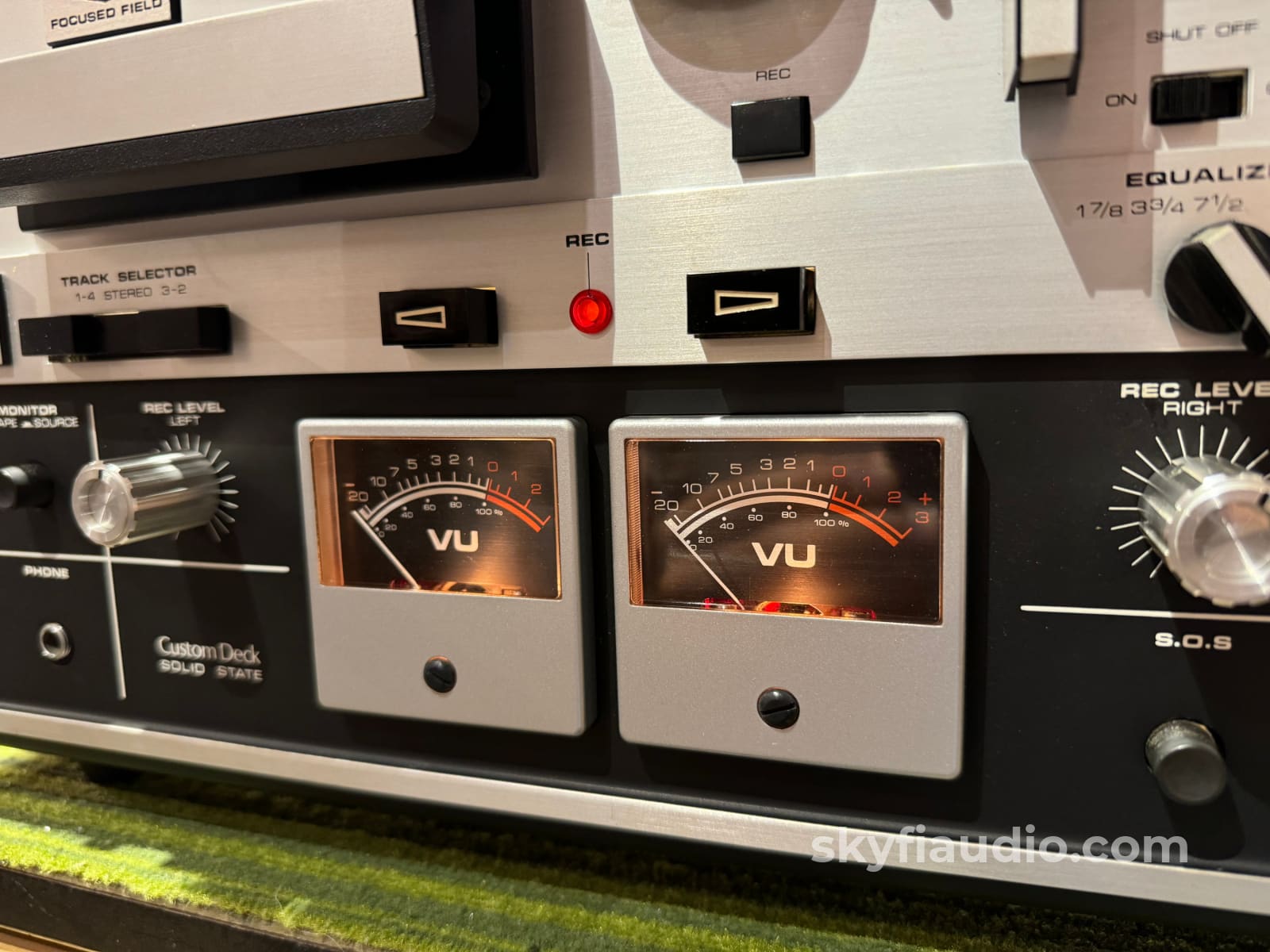
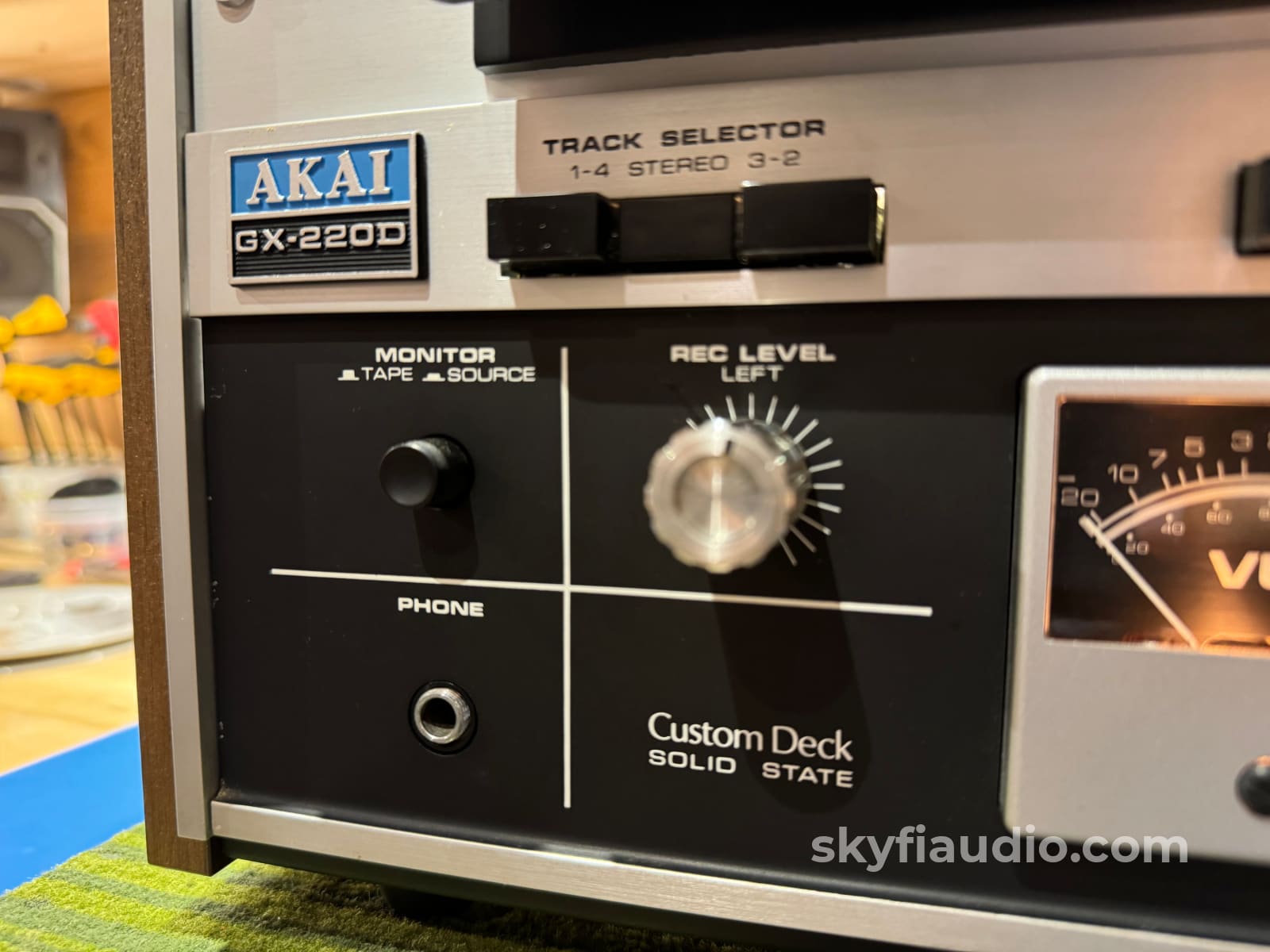
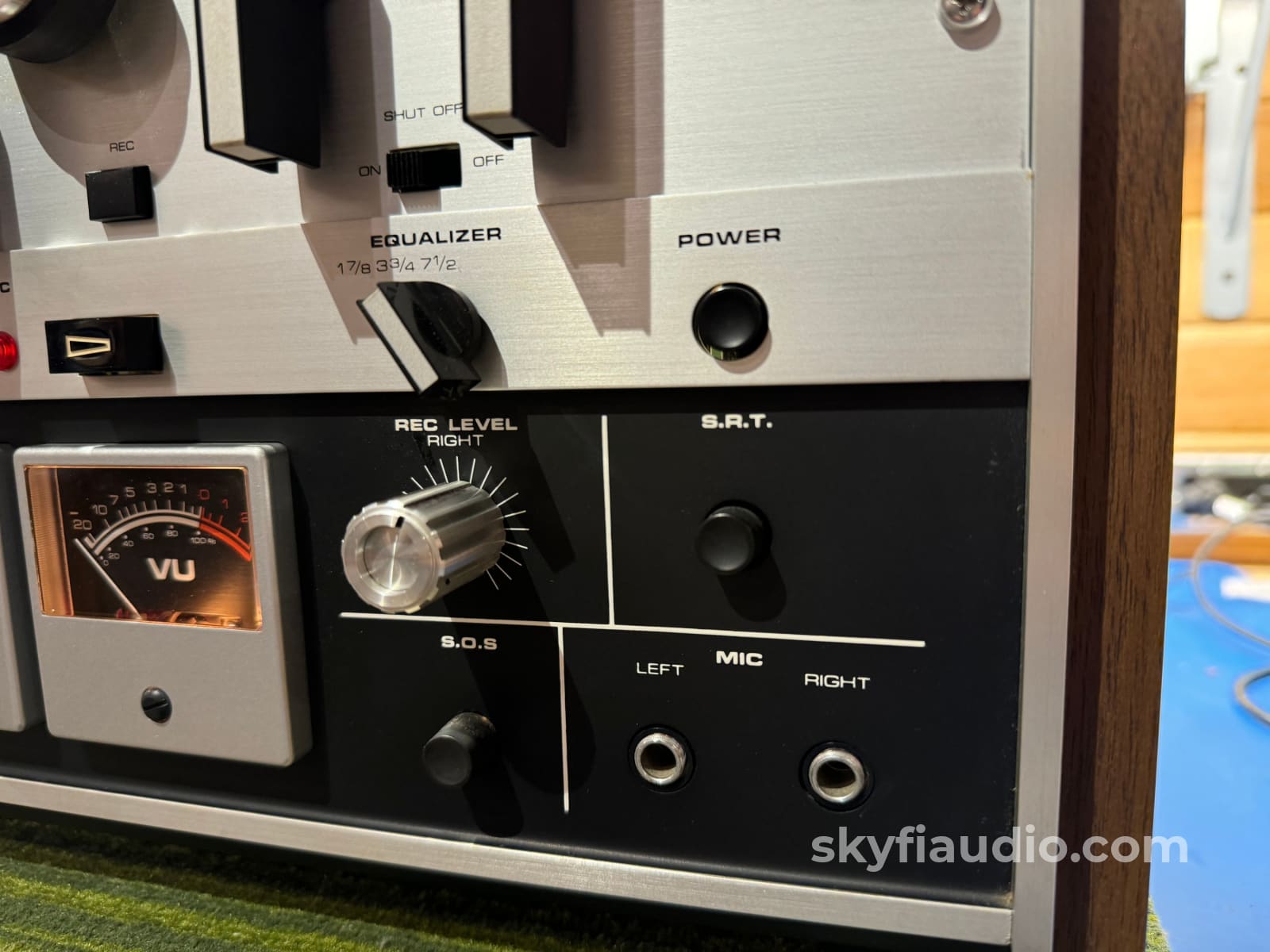
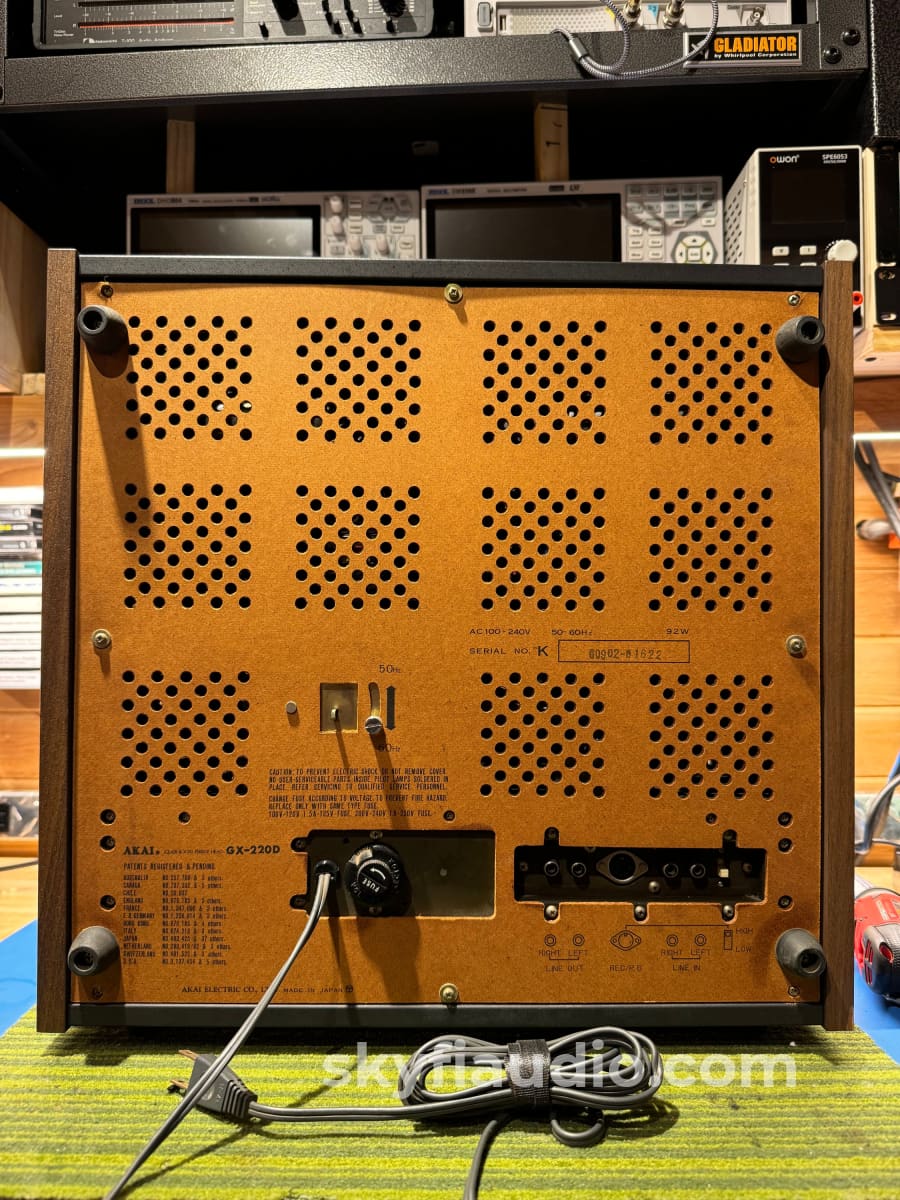
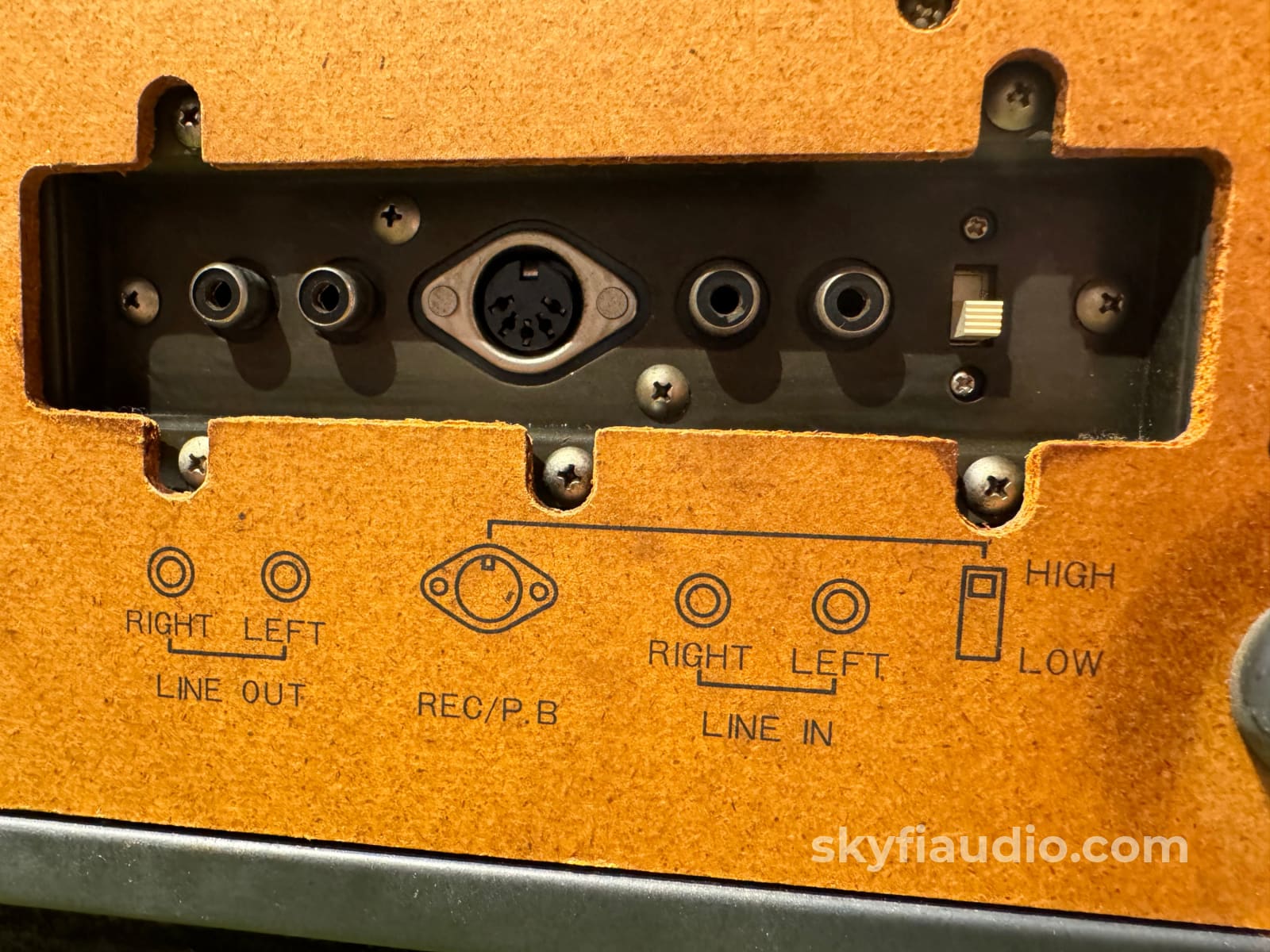
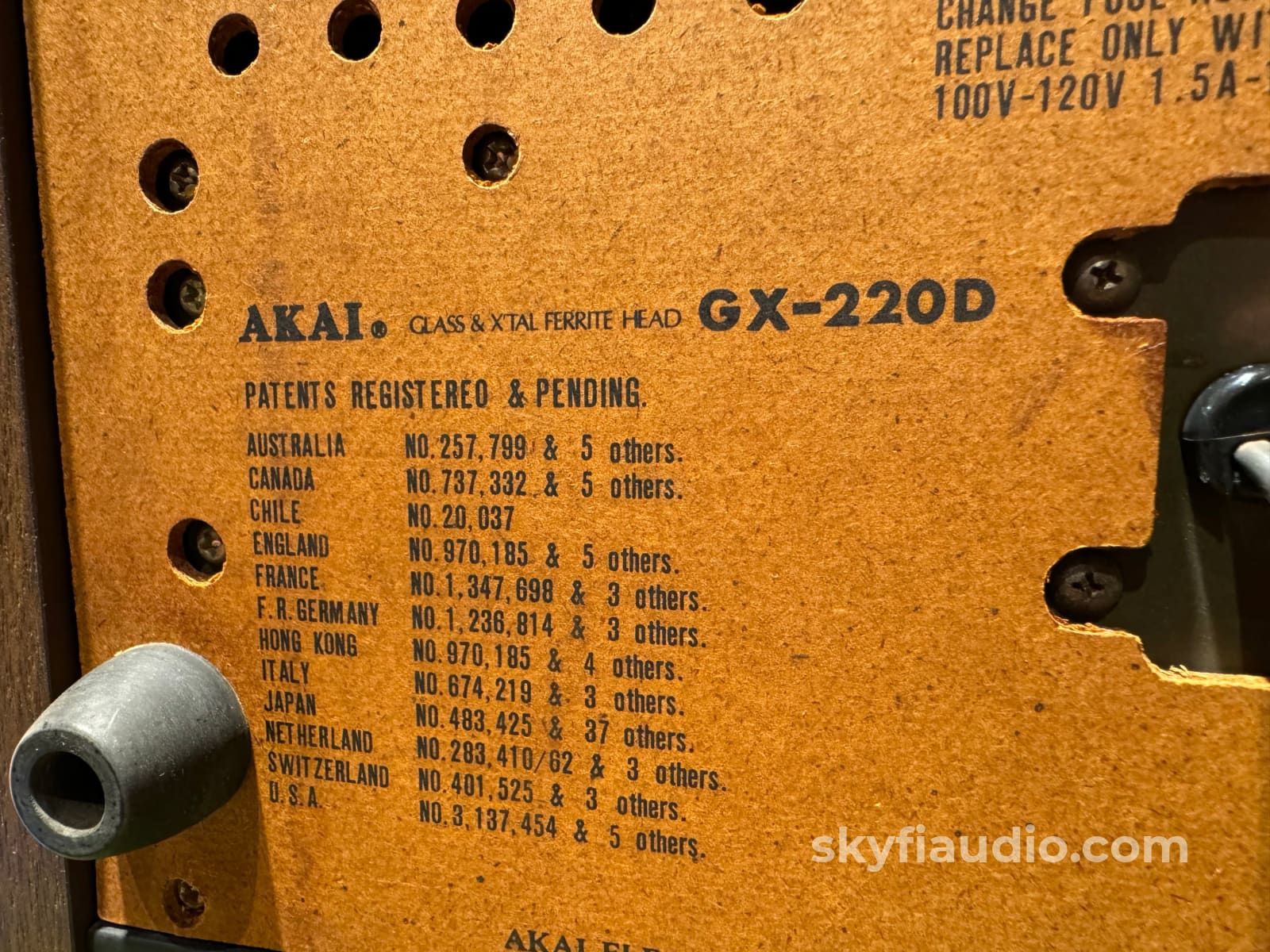
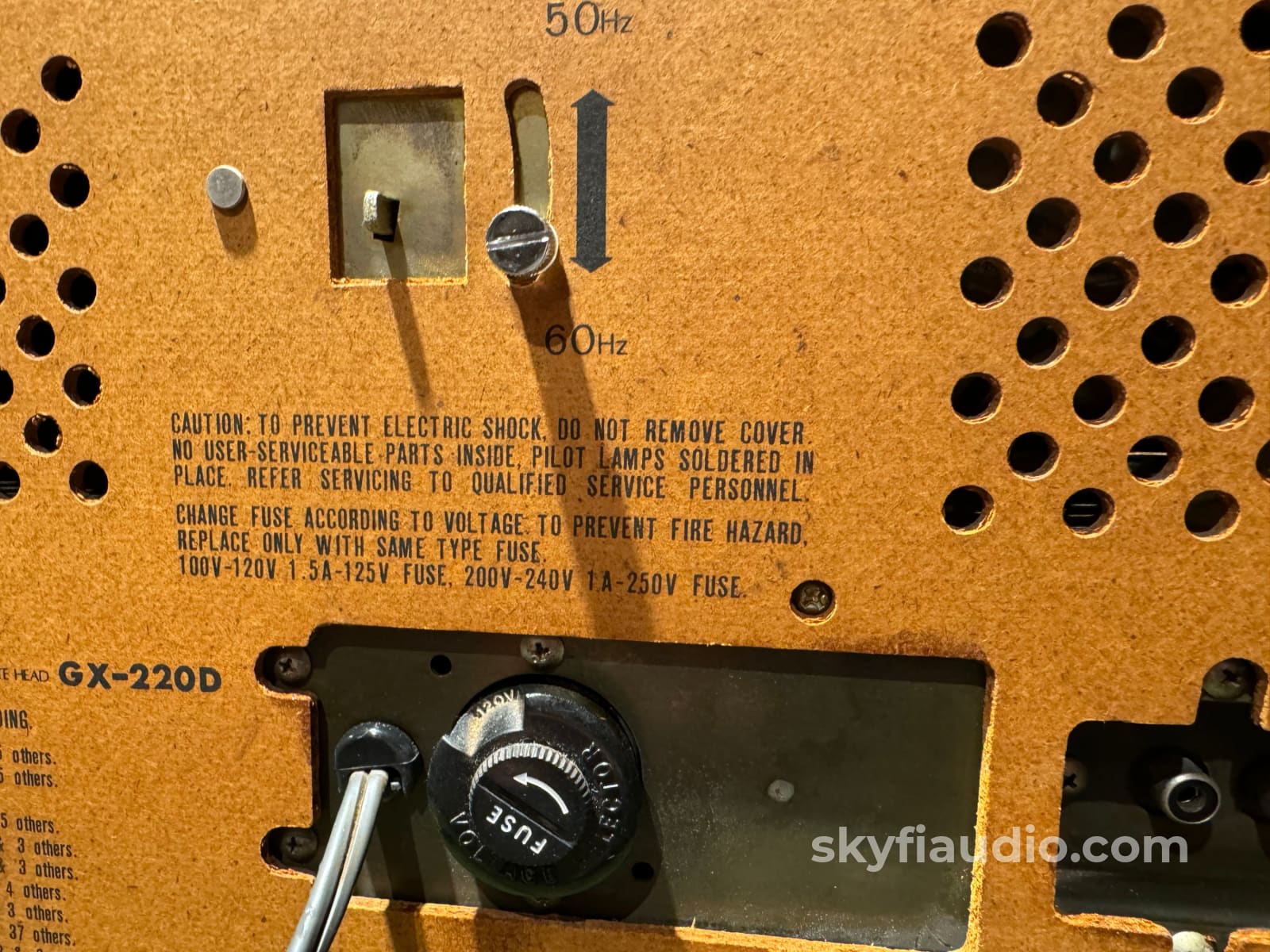
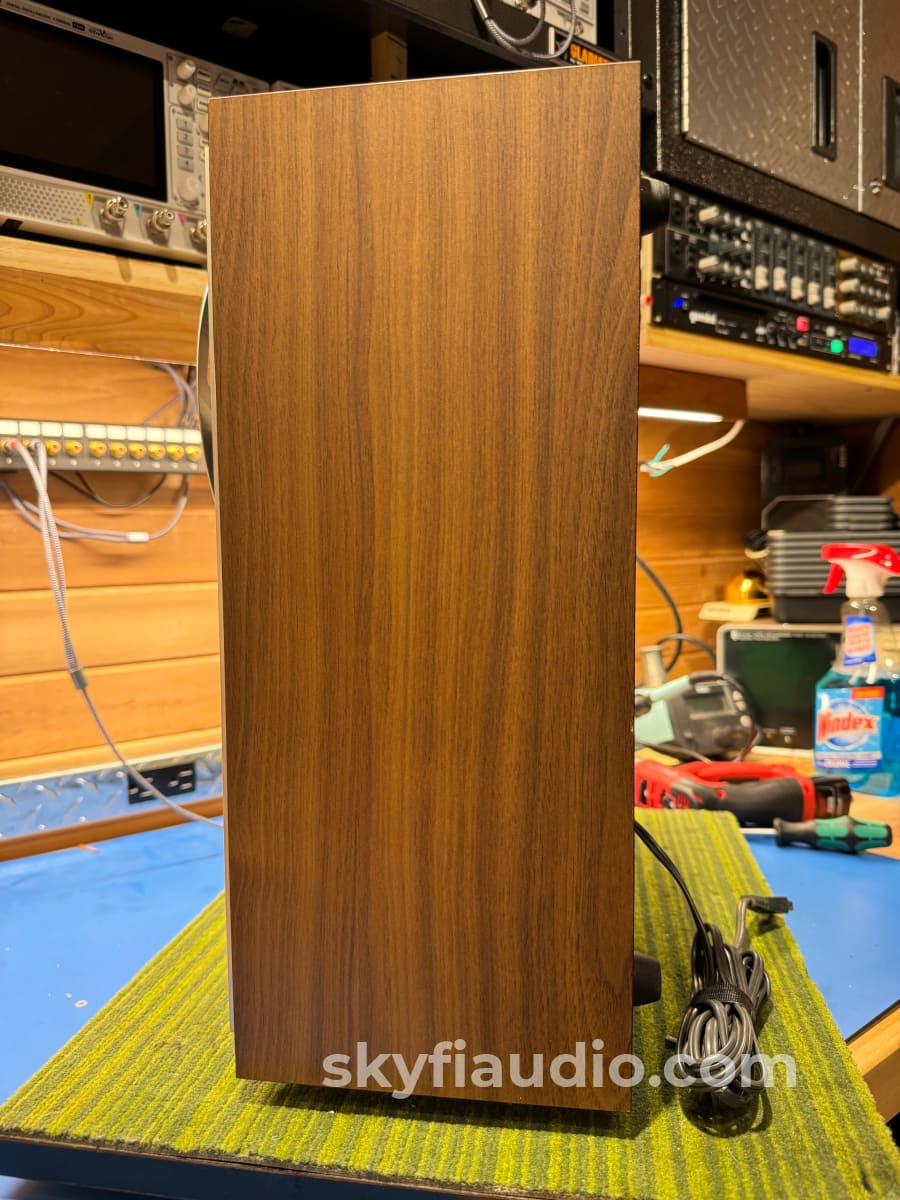
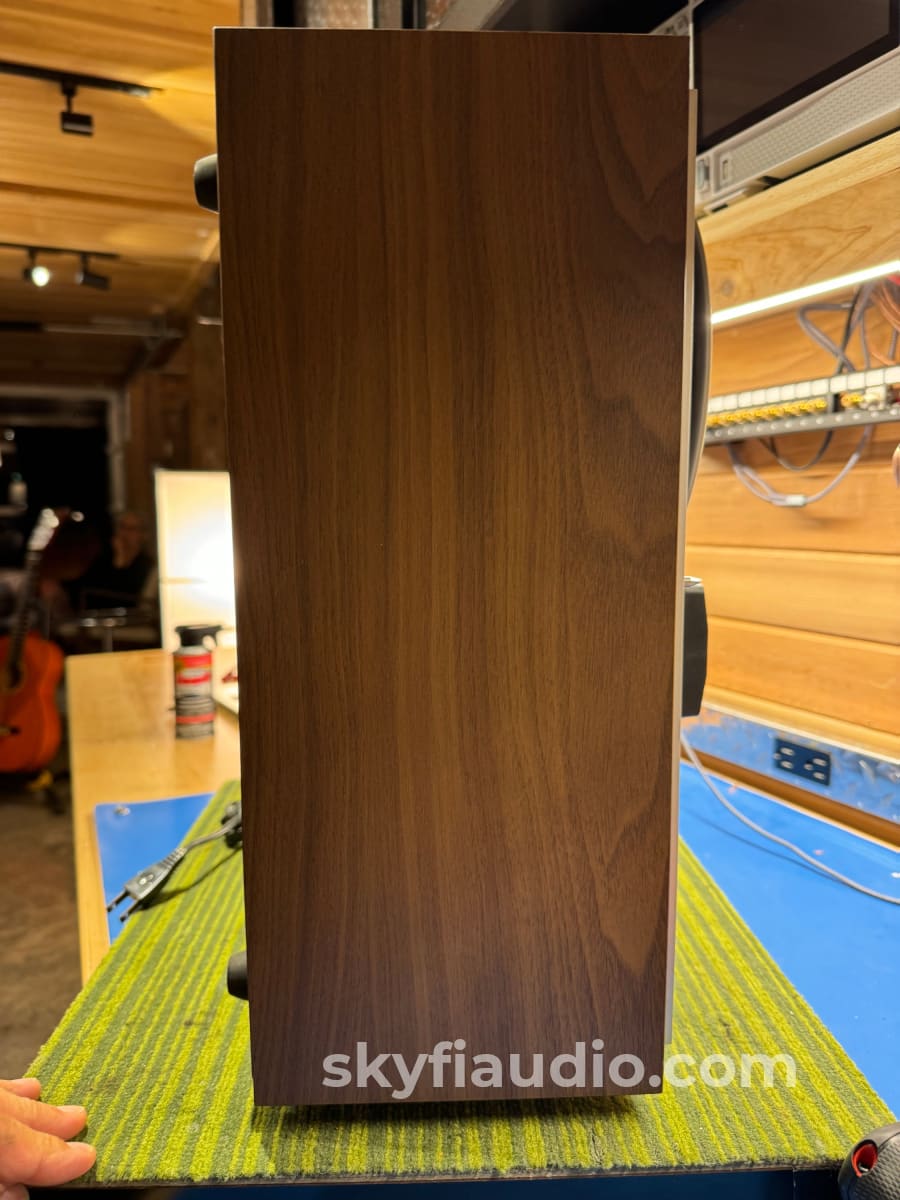
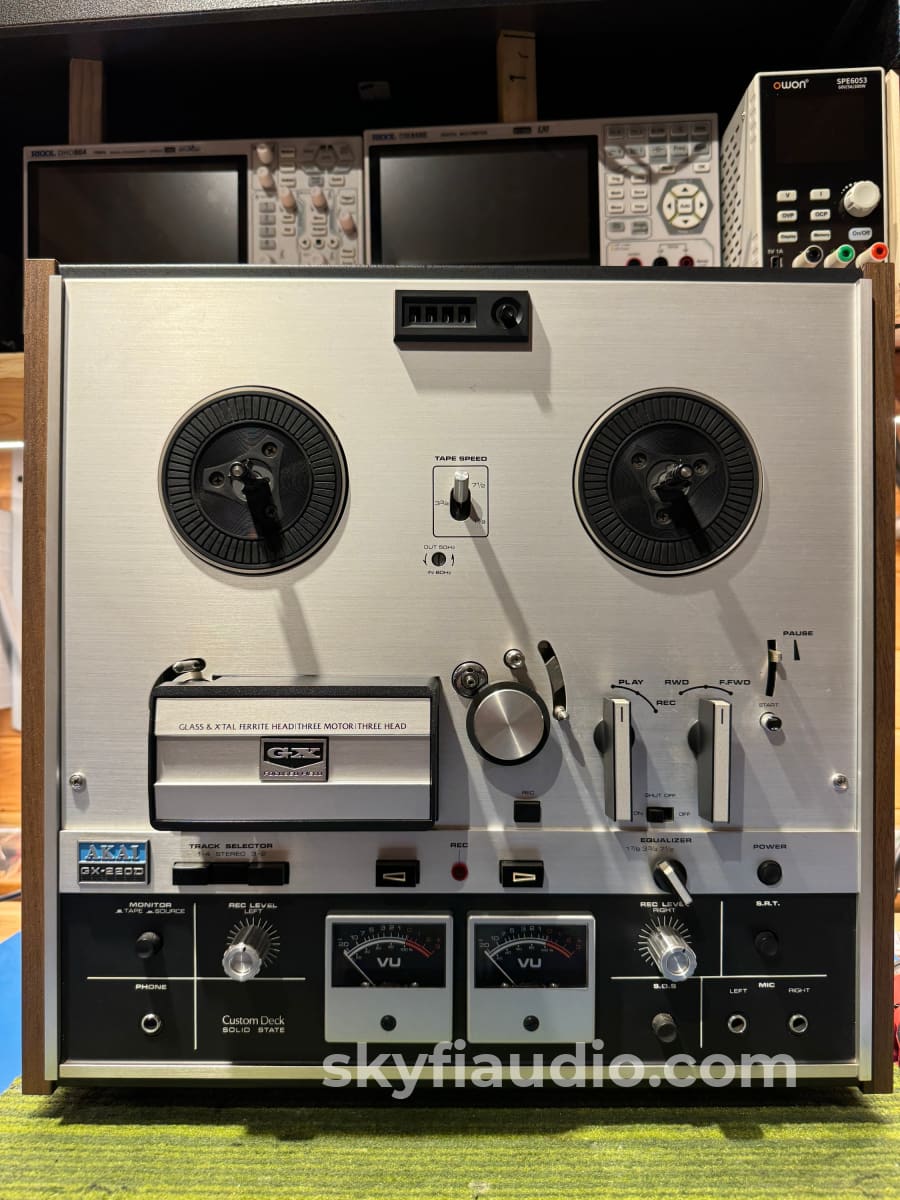
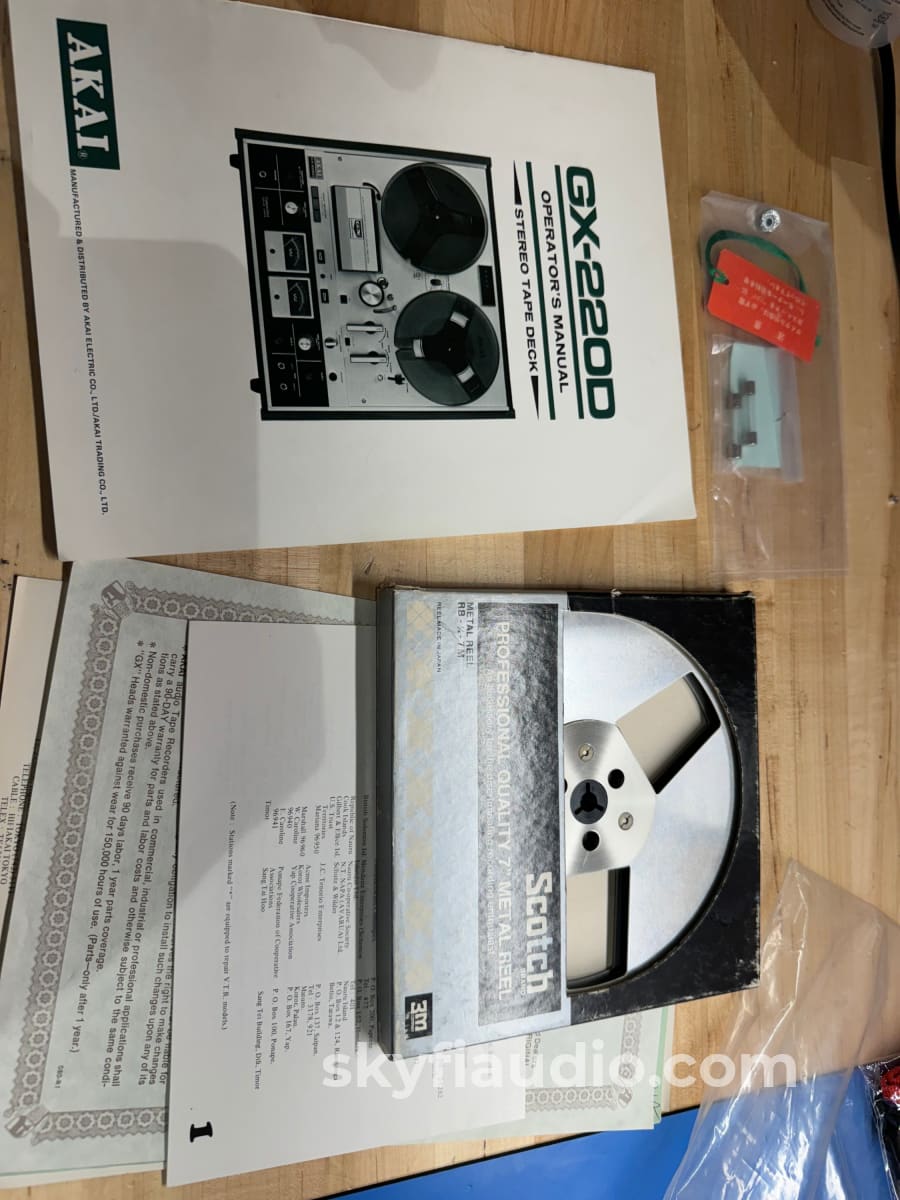

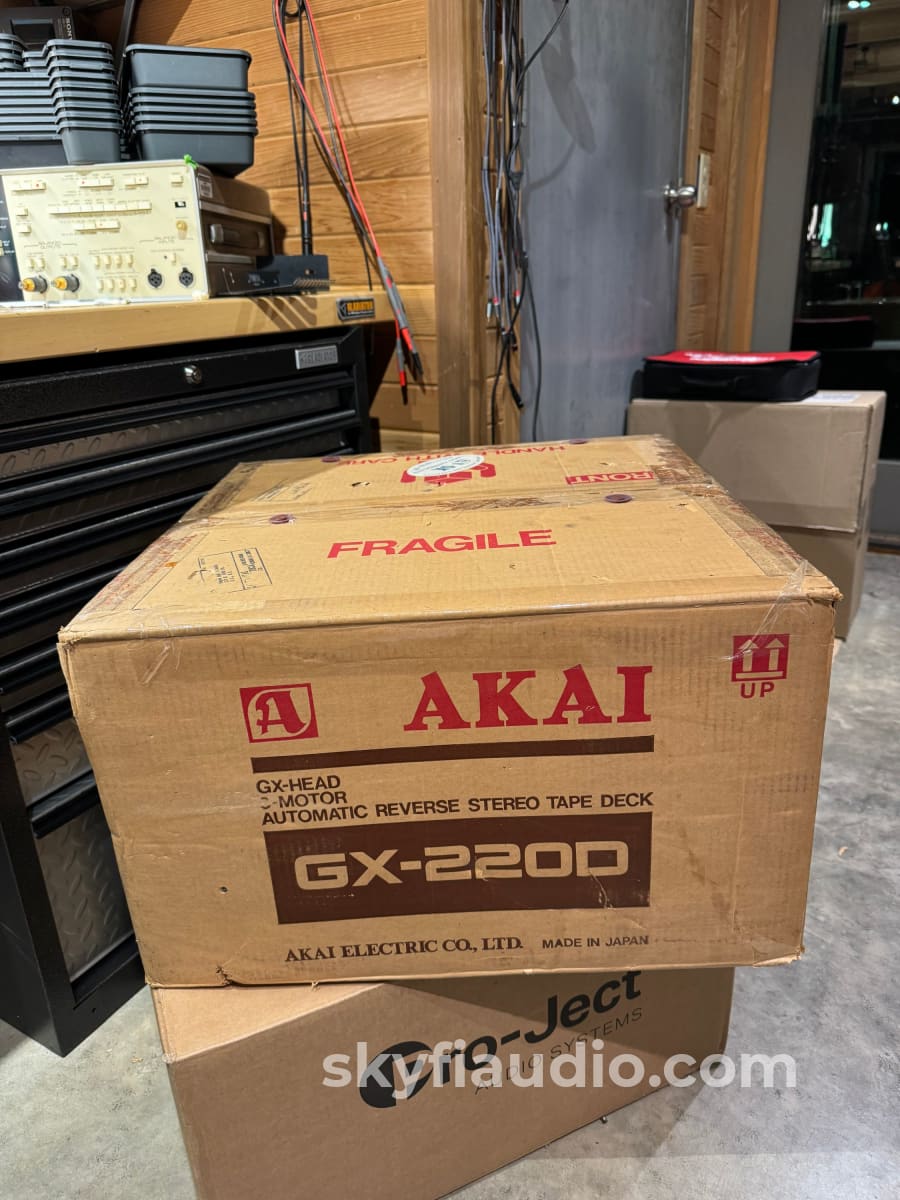
Akai GX-2200 Reel to Reel - Rare Complete Set - Like New
Free Shipping on Most Electronics - Excludes Speakers and Items Requiring Freight - Contiguous U.S. Only
Pickup currently unavailable at SkyFi 479

Akai GX-2200 Reel to Reel - Rare Complete Set - Like New
SkyFi 479
479 South Broad Street
Glen Rock NJ 07452
United States
General:
Rare Find.
This compact Akai Reel to Reel comes complete with its original manual and box. It will also include a take up reel like the day it left the factory.
It features auto reverse and accepts up to 7 inch reels. It also uses Akai's special developed glass and Xtal ferrite heads for great playback and recording. It can play tape in 3 different speeds (1-3/8 ips, 3-3/4 ips, and 7-1/2 ips).
It's perfect for someone looking for a simpler machine with good capability.
From Akai:
Up to now in manufacturing recording/playback heads, permalloy has been used for making the core and metallic foil has been used for making the gap.
However, for the model GX-220D Akai has developed a glass and Xtal (crystal) ferrite head.
The core is made of pure crystal ferrite in addition to which the inner circumference of the head shield (including the core and the gap) is mounted and set in glass.
As a result, the head is not only dust free and wear free, but produces a focused field (the magnetic field is concentrated into a narrow oblong radius) permitting recording without the weakening or erasing of the signal by the bias current.
High frequency signals can be recorded and regenerated as original sound without distortion.
SkyFi Cosmetic Notes:
Amazing condition overall with minimal signs of use, almost looks new. Quite possibly never been used.
Brand Background:
Akai Electric Company Ltd. was founded by Masukichi Akai in Tokyo Japan in July of 1929 as a manufacturer of radio components, sockets and other electrical parts.
Ownership:
Single Owner
Connections:
RCA Line outputs, RCA Line inputs
General Sound:
Smooth, uncolored, undistorted natural and clean
Cosmetic Condition:
8/10 = Very Good. Excellent front faceplate, one minor flaw on chassis side or top. See our detailed rating description here.
Working Condition:
Working perfectly and tested in our lab.
Included:
Exactly as pictured and described above.
Packing:
Original Manufacturers Packing
Specs:
Track system: 4-track, 2-channel, stereo/monaural system
Heads: 1 x GX playback, 1 x GX record, 1 x erase
Motor: 2 x reel, 1 x capstan
Reel size: up to 7 inch reel
Tape speeds: 1 7⁄8 3 3⁄4 7 1⁄2 ips
Wow and flutter: 0.08% (7 1⁄2 ips)
Frequency response: 30Hz to 24kHz (7 1⁄2 ips)
Signal to Noise Ratio: 50dB
Total harmonic distortion: 1.5%
Input: 50mV (line), 7mV (DIN), 0.2mV (mic)
Output: 1.23V (line)
Dimensions:
16.9 x 16.7 x 9"
Weight:
41.8 lbs.
Approximate Age:
1972
Link to Manual:
Click Here
Recommended Cables:
Kimber Kable - RCA Interconnects - Better
Testing Process:
First steps are performed to determine if the unit is a candidate for our full restoration process, or if it's just in need of a light service.
We perform a basic functionality test to ensure proper playback, fast forward, and rewind. We look for smooth operation of the motors, transport engagement, and associated rolling parts.
We then do an internal physical inspection to ensure the belts and rubber consumable parts are up to spec.
Internal components are checked to make sure there are no signs of heat stress or damage, particularly in the power supply section. Capacitors are checked for telltale signs of predictive failure including bulging, shrunken wrappers, or physical leakage. We also inspect the PCBs for discoloration from resistors or transistors that may have been running hot. On vintage units we often spot check select capacitors for value and ESR.
A light service will involve replacement of belts and rollers, external cleaning of heads, mechanism and boards, and basic record and playback tests.
A full restoration will often include disassembly of the drive system and replacement of all consumable and wearable parts including pinch rollers, belts, brakes, and bearings. We then clean, lubricate, and re-assemble the drive and perform basic mechanical alignment to ensure proper tape path and head alignment.
Final calibration will involve adjustment of the playback, erase, and record heads, along with optimization of the bias for a specific tape type. We do this with the aid of a Sound Technology 1510A tape deck analyzer plus a Nakamichi T-100 Audio Analyzer with reference calibration tapes.
Final listening tests are performed while monitoring with our reference Grado HP-1 headphones and a variety of factory and custom reference recordings We find that there is no better system for critical listening on tapes than with headphones, especially when comparing a live feed to a recorded feed.
Choose options


















